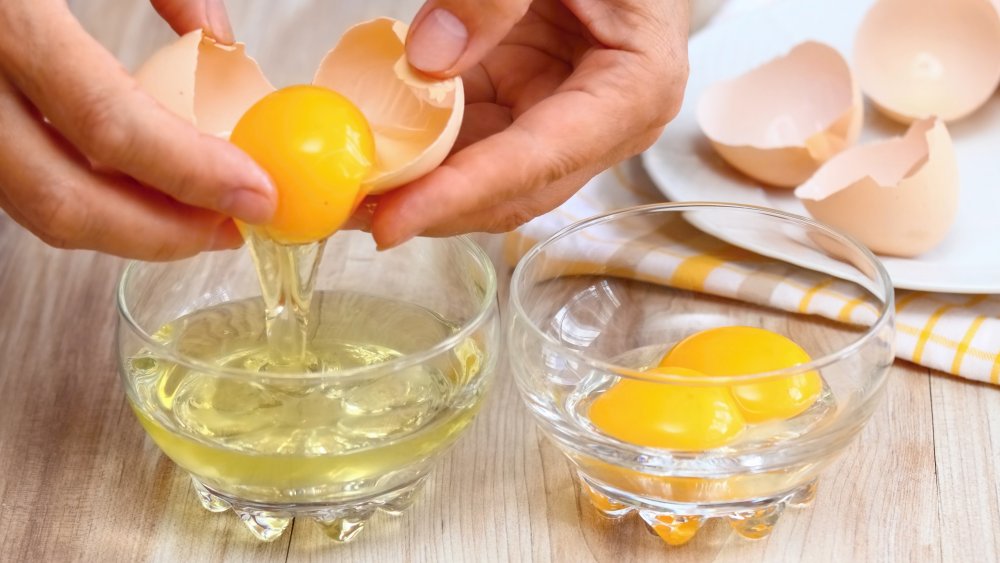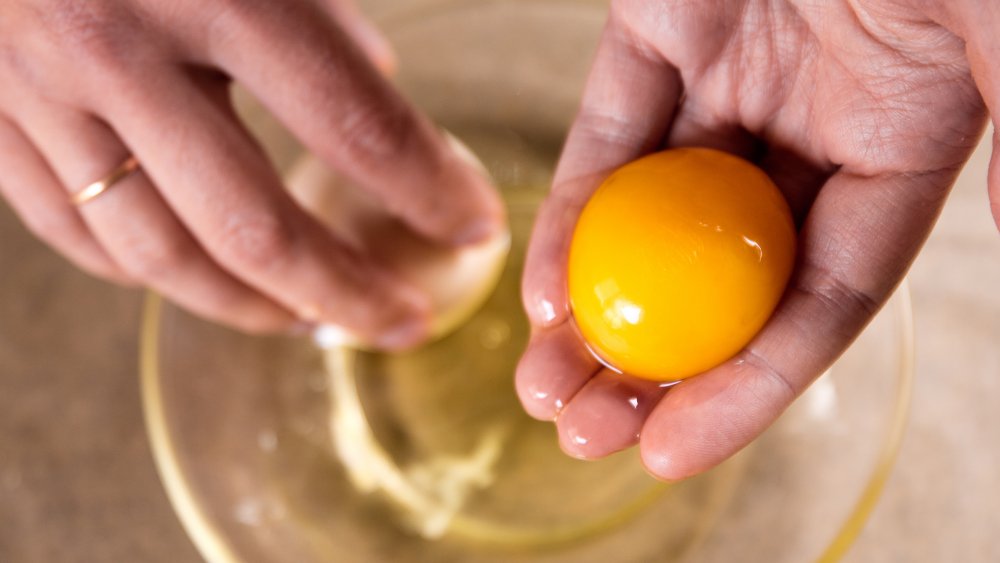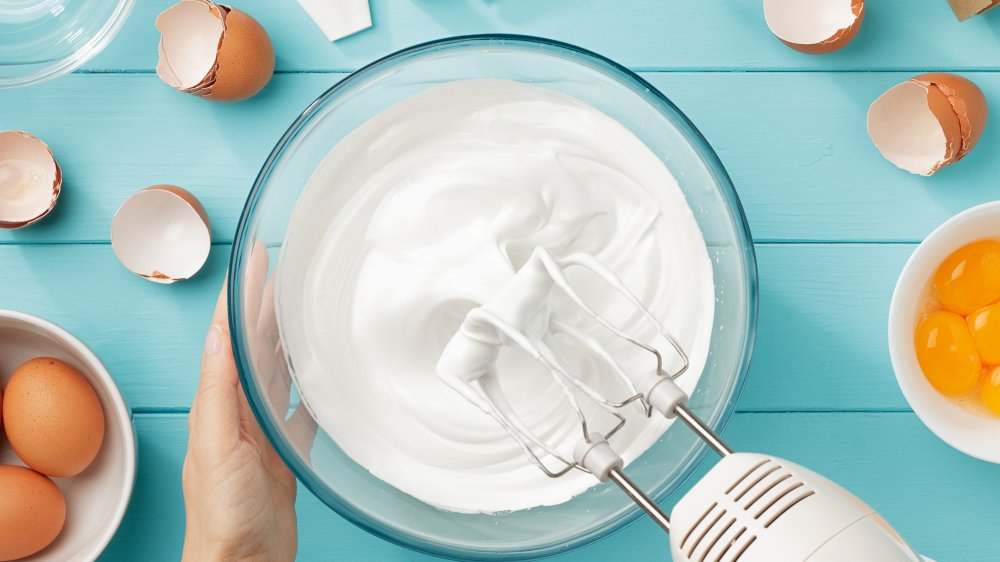You've Been Separating Eggs Wrong Your Whole Life
Learning to properly separate an egg is a little like learning to drive a car with a stick shift. Using the shell-to-shell method (transferring the egg back and forth between the split halves of the shell until only the yolk remains), can be as precarious as trying to ease up on the clutch and down on the gas at the same time without stalling out in the middle of traffic. If your yolk happens to break as a result of maneuvering it between sharp, jagged eggshells, the challenge of slipping the egg white out with no bits of golden yellow yolk mixed in is a tense experience.
Why not consider a little insurance policy to pave the way for you? This 3-bowl trick from My Recipes will give you a simple method for separating eggs, with a built-in safety net, so there's no risk of an eggy wreck. If you're seeking some crème brûlée-worthy yolks, use this trick to separate your eggs and freeze the egg whites. If you're just after the whites, maybe for meringues or a sky-high souffle, this trick will ensure perfectly whippable egg whites, and you can freeze the yolks too.
Use three bowls to separate your eggs
To start, you'll need two clean hands, three clean bowls, and as many eggs as you want to separate. Begin by cracking the eggs on a flat surface, like your kitchen counter. Doing this, instead of cracking the eggs on the side of a bowl, will prevent any errant bits of broken shell from finding their way into your eggs. Next, holding the egg in your hands over bowl number one, press the tips of your thumbs into the crack and open the shell, allowing the egg to flow into your hand. Let the egg white slip through your fingers into the bowl. You'll be left holding the yolk, which you can drop into bowl number two.
Carefully inspect the egg white in bowl number one, looking for egg yolk spillage – this is your insurance policy. If it's all clear, pour the egg white from bowl number one into bowl number three. This third bowl is reserved only for egg whites with no bits of egg yolks mixed in. If you find a yolk mingling with the white in bowl number one, don't combine it with the rest in bowl number three. Depending on how much yolk is in there, you might be better off saving it for a use that doesn't require whipping.
Successfully separating eggs is the key to fluffy egg whites
To ensure your egg whites are fit for whipping (if that's what you're after), pay attention to the yolk. The Pioneer Woman warns any amount of fat (i.e. egg yolk) will prevent egg whites from achieving their full volume during whipping. Serious Eats tested this theory by introducing different amounts of egg yolk to egg whites prior to whipping them and recorded the results.
It turned out, one single drop of egg yolk mixed in with three large egg whites didn't prevent them from forming soft or stiff peaks. It just increased the whipping time by one to two minutes. However, when three drops of egg yolks were mixed into the same amount of whites, several minutes of whipping resulted only in a soft, wet foam; peaks of any kind were impossible to achieve. So, to properly separate your eggs, and avoid un-whippable egg whites, give this 3-bowl method a try.


